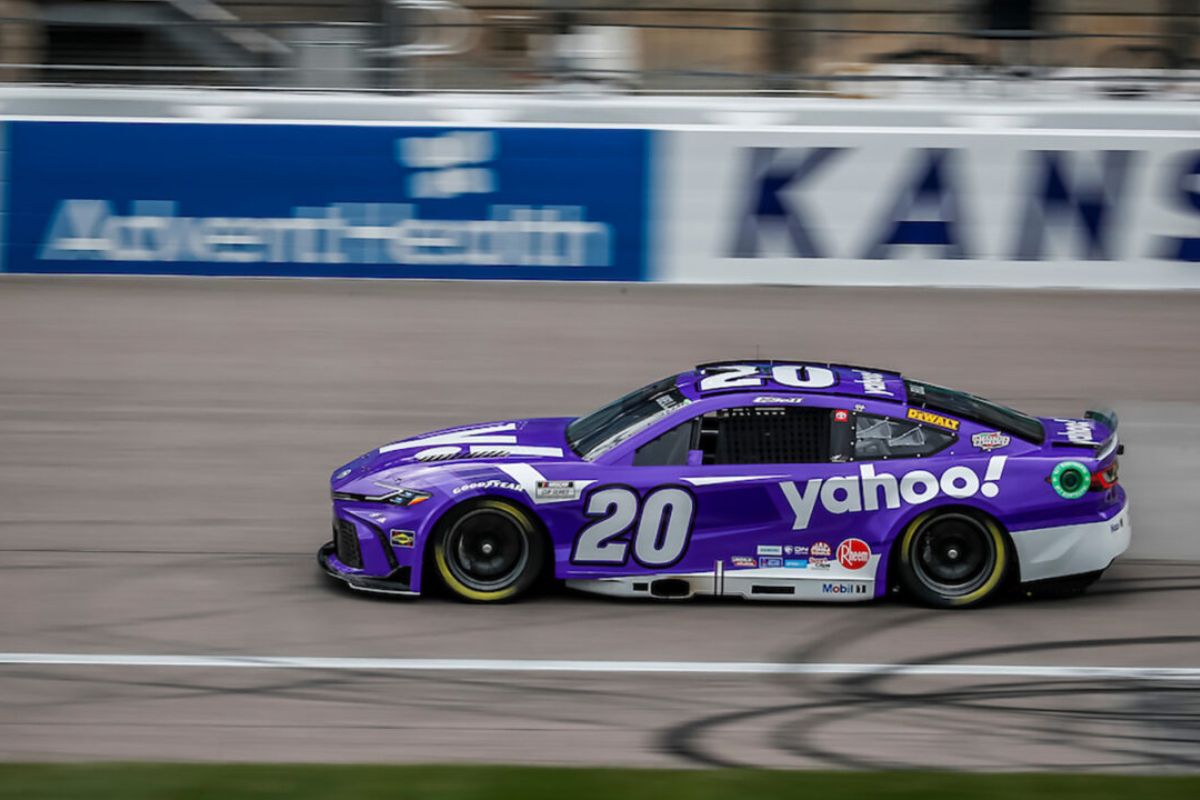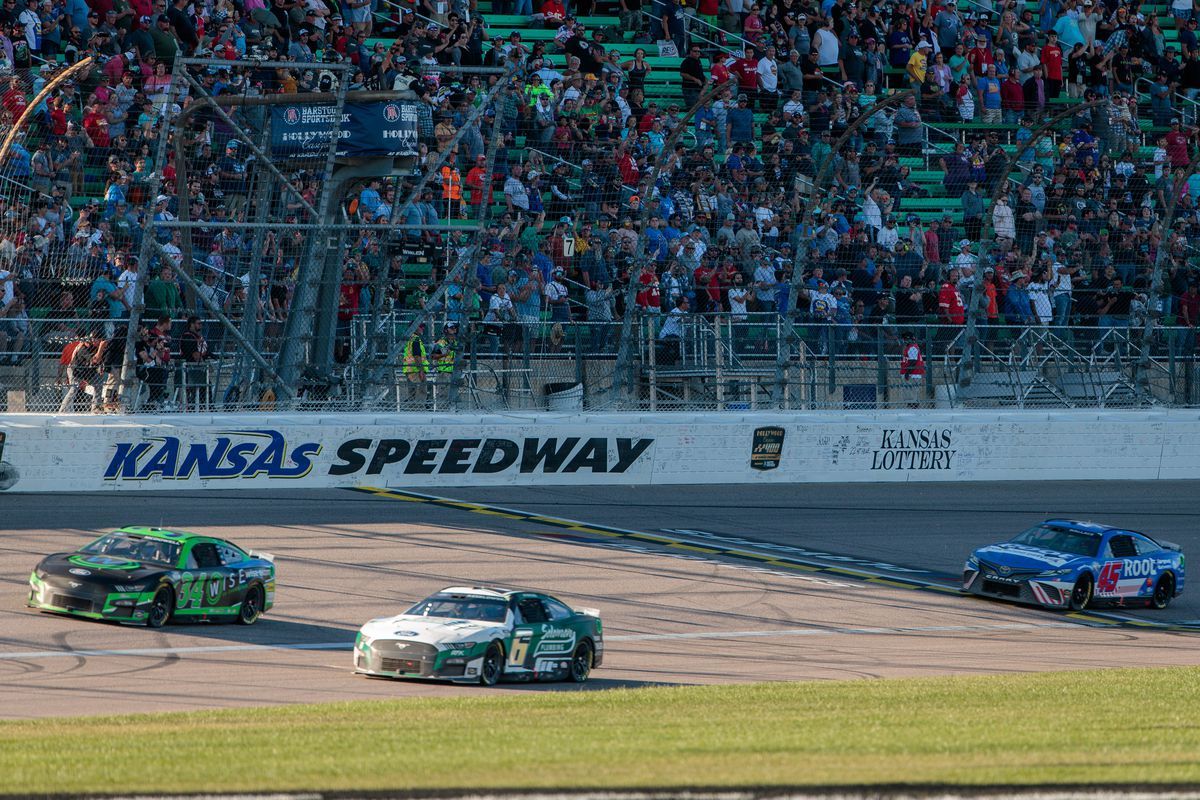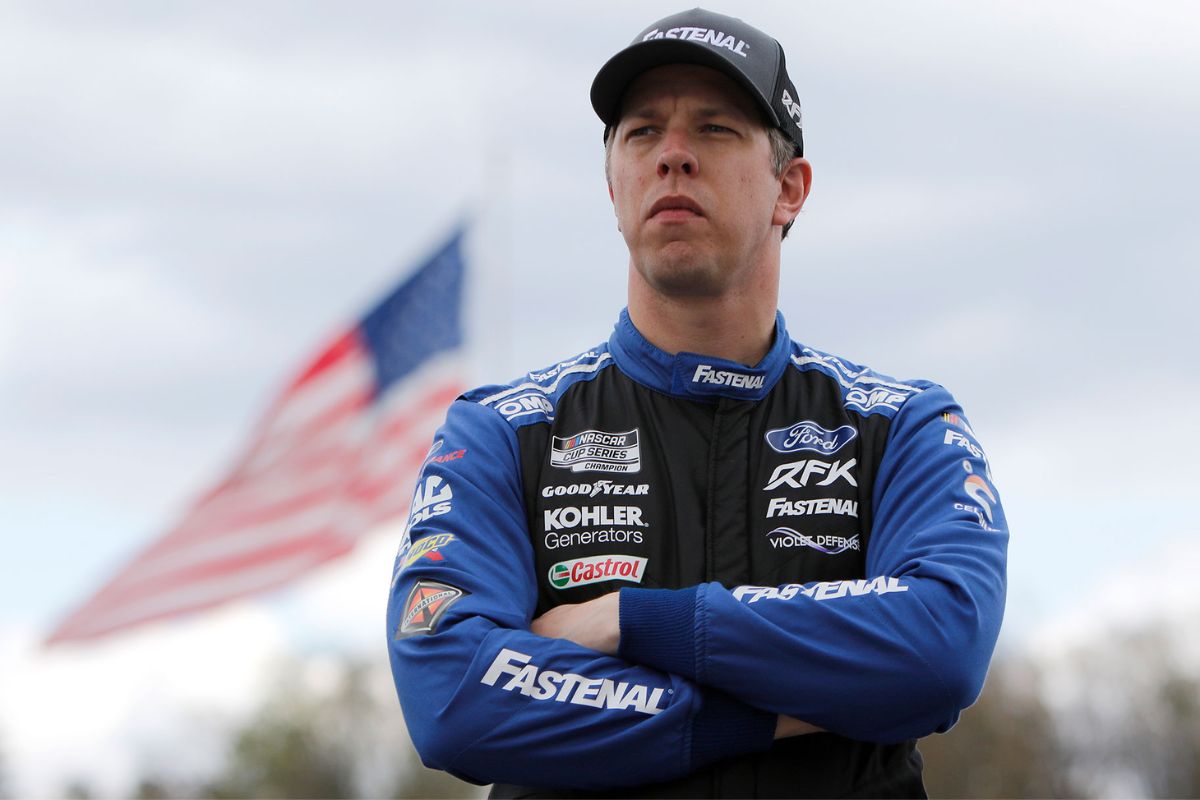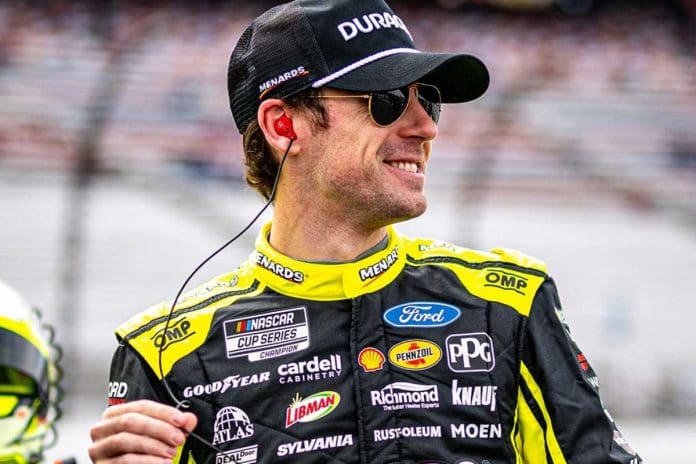NASCAR Drivers’ Practice Secrets: In NASCAR, the disclosure of practice techniques by prominent driver Ryan Blaney offers an intriguing peek into the evolving strategies that top racers employ to maintain their edge. Blaney’s methodical blend of mental preparation and advanced simulation technology highlights a significant shift from purely physical driving practices to a more analytical and strategic framework. This approach not only hones his skills but also adapts to the dynamic nature of auto racing.
Key Takeaways
- Ryan Blaney emphasizes the importance of SIM racing for honing skills without physical strain.
- He advocates for a mix of simulation and real track presence to optimize race preparedness.
- Blaney reviews past race data extensively to develop better strategies and decision-making abilities.
- He stresses the role of detailed race shop preparation in setting up a competitive car.
- Blaney supports more on-track practice to enhance driver confidence and vehicle tuning.
Impact of Reduced Practice Sessions
The reduction of practice sessions after COVID-19 pandemic in NASCAR’s Cup Series has compelled teams and drivers to adopt creative strategies to optimize their performance in preparation for race weekends. Historically, extensive practice sessions provided drivers with substantial track time to fine-tune their vehicles and adapt to race conditions. However, the current regime mandates a significant shift in approach, pushing teams towards innovation under constraint.
The scarcity of practice opportunities mandates a more detailed approach to performance optimization. Teams now rely heavily on data simulations and advanced predictive analytics to anticipate track conditions and vehicle performance. This shift not only challenges the drivers to adapt quickly to real-time race conditions but also places a premium on the efficiency of the limited practice runs they are afforded.
Moreover, drivers like Ryan Blaney have expressed how these constraints have altered their mental preparation and approach to racing. The reduced track time compels a driver to enter a race weekend with a more robust pre-race strategy, emphasizing mental rehearsal and scenario planning. This preparation involves studying historical data and competitor performance to develop a comprehensive understanding of potential race dynamics.

Emphasis on Race Shop Preparation
Given the limitations on adjustments during the race, teams now prioritize extensive preparation in the race shop to make sure vehicles are optimized before reaching the starting line. This approach is fundamentally reshaping how teams handle the pre-race phase. The strategic focus has shifted greatly from dynamic trackside tuning to meticulous in-shop engineering and setup. With the constrained ability to make substantial modifications during the race, the emphasis on initial conditions of the car has never been more crucial.
“You’re kind of limited to what you can change at the track and on pit roads.”
“So that part puts a huge emphasis on the teams to be ready. The drivers, I mean, you better be up to speed right away. I mean, you can’t be taking three or four laps to get up to speed.” – Ryan
Ryan Blaney’s observations underline a crucial shift in the operational tactics of NASCAR teams. The reduction in real-time adjustments places a premium on predictive analytics and simulation models that can forecast race day conditions and vehicle performance with high accuracy. Teams are investing heavily in technology that allows them to simulate races and test different car setups in virtual environments, thereby arriving at the most effective configuration before the car ever hits the track.
Furthermore, this strategic pivot elevates the role of data analysts and engineers in racing teams. They are tasked with translating complex data into actionable insights that can dictate vehicle adjustments during the initial setup phase. This reliance on data-driven strategies ensures that despite the limited scope for adjustments during the race, the vehicle’s performance is optimized from the outset.
Preparation Methods
Drivers’ preparation methods, important for achieving peak performance from the start, involve intensive SIM racing and detailed analysis of past races. This dual approach allows drivers to refine their tactics and understand track intricacies before physically setting foot on the asphalt. The immediacy with which a driver must reach top speed is unforgiving; therefore, these preparation techniques are not only beneficial, but necessary for success in the environment of NASCAR racing.
SIM racing, in particular, offers a virtual yet realistic platform where drivers can practice relentlessly without the physical wear and tear on their actual vehicles. It serves as a digital proving ground, where every turn and straightaway can be mastered through repetition and strategy adjustment. This method is critical for developing muscle memory and decision-making speed that are crucial during actual races.
Conversely, the meticulous review of past race data provides a more analytical lens through which drivers can study. This involves watching previous races, sometimes focusing on a single corner or tactic over multiple events to understand different outcomes and their catalysts. Ryan Blaney, for instance, emphasizes this approach, using it to dissect and learn from every available scenario.
“Everyone’s a little different. Some guys do SIM, other guys watch races and look at data from last year. I’m more kind of a data guy than a SIM guy. But everyone’s a little different.”- ryan

Team Owners’ Perspective
While drivers efficiently manage the demands of preparation, team owners like Jimmie Johnson and Brad Keselowski feel the financial strain, advocating strongly for increased on-track practice sessions to mitigate costs. The perspective of these owners and drivers is rooted in a multifaceted understanding of the operational dynamics of NASCAR teams. Their push for more practice time is not merely a budgetary concern but a strategic approach to improve team performance and logistical efficiency.
From a team owner’s vantage point, the allocation of more track time is synonymous with better-prepared vehicles and drivers, which can lead to fewer costly errors during races. Johnson and Keselowski, both seasoned drivers turned owners, are particularly vocal about this issue, understanding the direct correlation between practice and performance. Their advocacy is driven by a desire to optimize every variable under their control, from the tuning of the car to the mental readiness of their drivers.
Moreover, these owners are strategically positioned to see the broader implications of limited practice sessions. They recognize that insufficient track time can lead to underperformance, which not only affects race outcomes but also impacts team morale and sponsor relations.
Financial Impact and Call for More Practice
The financial ramifications of limited practice sessions have sparked intense debate among team owners. They argue that the costs of alternative preparation methods like SIM practice often surpass those associated with additional track time. This perspective challenges the sanctioning body’s rationale that reducing on-track practice would lower expenses and level the playing field for financially weaker teams.
Despite the intended cost-saving measures, team owners report a shift rather than a saving, with funds being redirected towards technological solutions such as high-fidelity simulation systems.
RFK Racing co-owner Keselowski has been particularly outspoken, revealing last month that the expenses incurred through SIM practices could sometimes exceed those of actual track practices. Such insights highlight the complexities of cost management in racing, where technological advancements are both a necessity and a financial burden. This sentiment is echoed by Jimmie Johnson, co-owner of Legacy Motor Club and a seasoned driver himself, who advocates for extended practice sessions. Johnson argues that more track time not only aids in competitive preparedness but also potentially mitigates the steep costs associated with simulation-based training.

News in Brief: NASCAR Drivers’ Practice Secrets
Ryan Blaney’s approach to NASCAR preparation highlights the changing landscape of auto racing, where technological advancements and cerebral strategies play essential roles.
The integration of SIM racing and meticulous analysis of past performances exemplifies a sophisticated method that balances traditional physical preparation with cutting-edge, data-driven techniques.
This shift not only improves driver performance but also impacts team dynamics and financial strategies within the sport, potentially setting new standards for practice and preparation in racing.
ALSO READ: Denny Hamlin Slams Brad Keselowski: NASCAR’s Practice Debate Heats Up!


